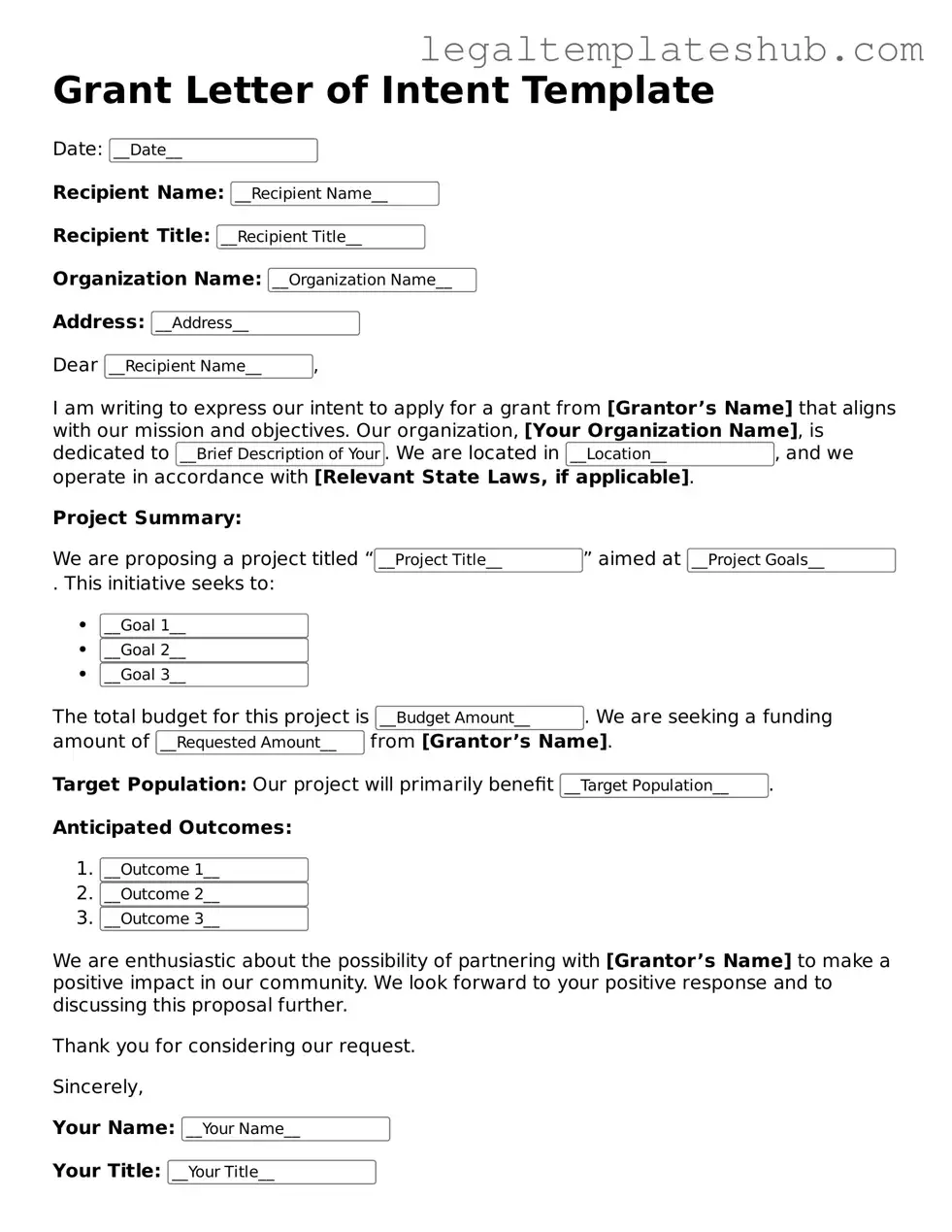Printable Grant Letter of Intent Template
A Grant Letter of Intent (LOI) is a preliminary document submitted to a funding organization, expressing an organization's intention to apply for a grant. This form outlines the proposed project, its goals, and the funding amount requested, serving as a way to gauge interest and eligibility before a full application is developed. For those looking to secure funding, filling out this form is an essential first step; click the button below to get started.
Access Editor
